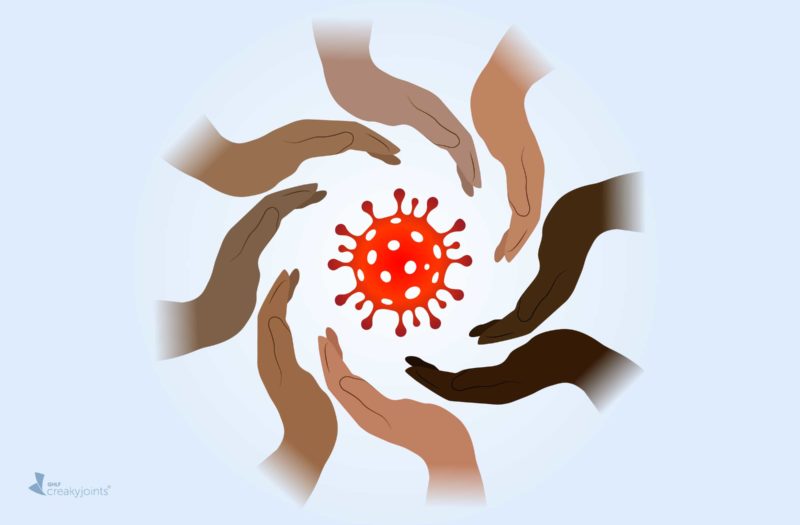Learn more about our FREE COVID-19 Patient Support Program for chronic illness patients and their loved ones.
New research continues to demonstrate just how disproportionate the incidence of coronavirus is among different racial/ethnic groups — specifically, a high percentage of cases in hotspot counties are among underrepresented racial/ethnic groups.
Published state and national data have shown that not only are people of color more likely to become infected with SARS-CoV-2, the virus that causes COVID-19, but they’re also more likely to experience more severe illness that might require hospitalization and have a greater risk of death from the disease.
Now, researchers have further discovered disparities among underrepresented racial/ethnic groups in coronavirus hotspots in a recent U.S. Centers for Disease Control and Prevention report. They defined a disparity in these groups as a difference of 5 percent or greater between the proportion of cases and the proportion of the population consisting of that group, or a ratio of ≥1.5 for the proportion of cases to the proportion of the population in that racial/ethnic group.
Between June 5 and June 18, counties in various states were classified as hotspots. More than 95 percent of the counties (in which race was reported for cases) had disparities in COVID-19 in one or more underrepresented racial/ethnic groups:
- Disparities for Hispanic populations existed in 74.7% of hotspot counties.
- Disparities for Black populations existed in 27.8% of hotspot counties.
- Disparities for Native Hawaiian/Other Pacific Islander populations existed in 24.1% of hotspot counties.
- Disparities for Asian populations existed in 5.1% of hotspot counties.
- Disparities for American Indian/Alaska Native populations existed in 3.8% of hotspot counties.
That, in turn, affects an incredibly large number of people. In this study alone, the largest groups living in hotspot counties where a disproportionate number of cases existed among that group were:
- Hispanic/Latino persons: 3.5 million
- Black persons: 2 million
- American Indian/Alaska Native persons: 61,000
- Asian persons: 36,000
- Native Hawaiian/Other Pacific Islander persons: 31,000
These disparities likely result from a multitude of conditions that may lead to increased risk for exposure to SARS-CoV-2, note the researchers. Those may include structural factors like economic and housing policies, or social factors like essential worker employment status (that requires in-person work) or living in multigenerational households.
“Further, long-standing discrimination and social inequities might contribute to factors that increase risk for severe disease and death, such as limited access to health care, underlying medical conditions, and higher levels of exposure to pollution and environmental hazards,” note the researchers.
The factors that contribute to disparities likely vary widely within and among groups, depending on location and other variables.
The report did have several limitations, including that more than half of hotspot counties did not report sufficient race data and were therefore excluded from the analysis. As well, there were data gaps due to missing information on race in many hotspot counties included in the analysis. Health departments also differ in the way race and ethnicity are reported, which complicates comparisons across counties.
However, experts do know that developing culturally responsive interventions within communities of color may help reduce disparities in COVID-19 incidence. Better data collection could also help to understand disease patterns and better inform health efforts.
The researchers note that this report highlights the need for continued investment in communities of color to address societal factors and structural racism that affect public health — during this pandemic and beyond.
Get Free Coronavirus Support for Chronic Illness Patients
Join the Global Healthy Living Foundation’s free COVID-19 Support Program for chronic illness patients and their families. We will be providing updated information, community support, and other resources tailored specifically to your health and safety. Join now.
Disparities in Incidence of COVID-19 Among Underrepresented Racial/Ethnic Groups in Counties Identified as Hotspots During June 5–18, 2020 — 22 States, February–June 2020. Morbidity and Mortality Weekly Report (MMWR). U.S. Centers for Disease Control and Prevention. August 21, 2020. https://www.cdc.gov/mmwr/volumes/69/wr/mm6933e1.htm?s_cid=mm6933e1_w.






